For almost two decades, the AIBN has melded world-leading expertise with cutting-edge technology to set a benchmark for translational research in precision medicine, materials science, and synthetic biology.
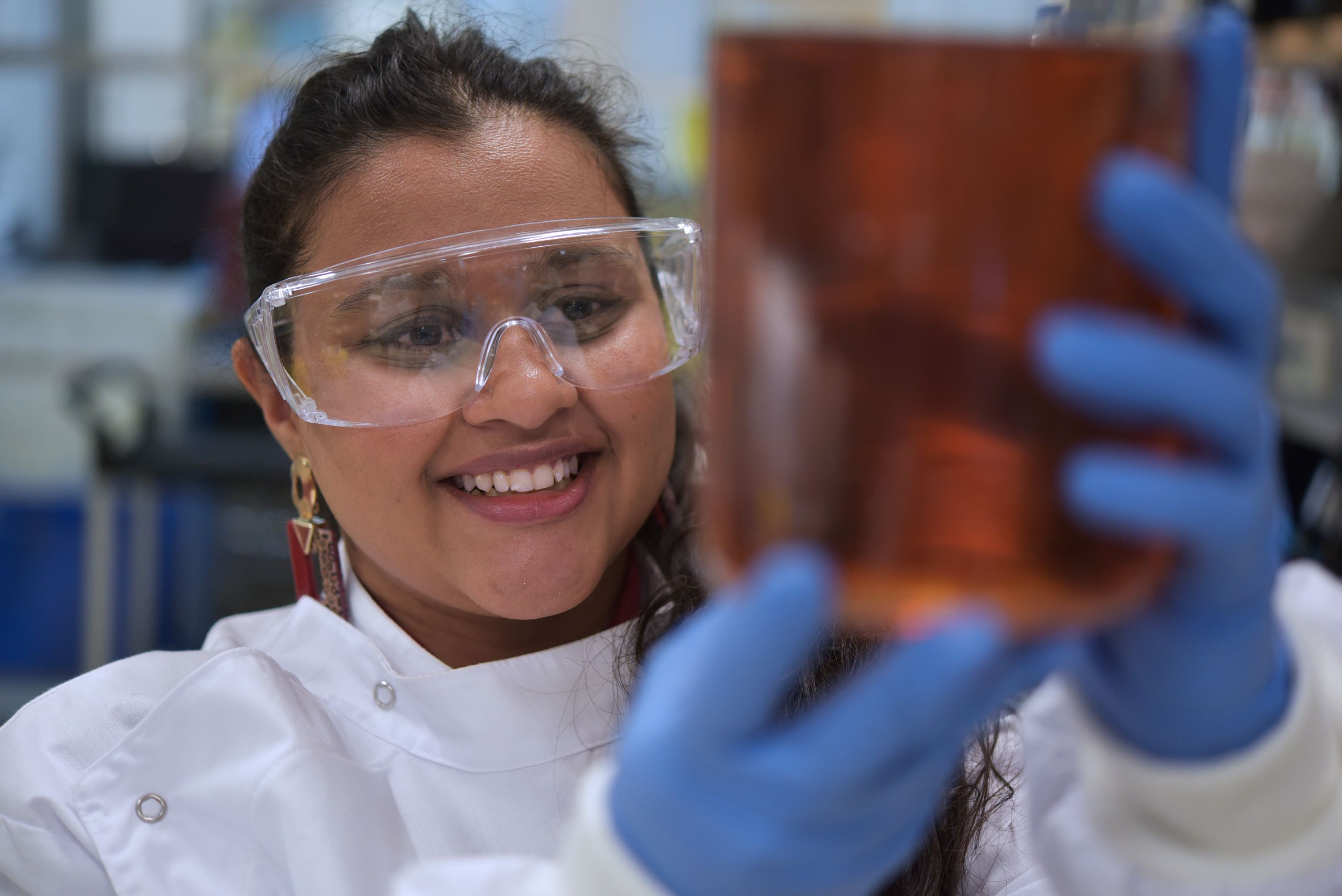
We can easily say that 2023 has been our best year yet.
Our international team of 500 diverse experts continued to produce solutions for the world’s biggest challenges, while forging deep connections with more than 100 industry partners and government collaborators to take our innovations from the lab bench to the production line.
And so on the back of new environmental and energy technologies, biofuels, organoids, and new platforms for vaccines and therapeutics, here’s a wrap of our biggest moments from the past 12 months – and some exciting developments we’re looking forward to in 2024.
Big industry wins
It was another bumper year for research contracts at the AIBN with $40 million signed from industry partners in the first nine months alone.
Our big business buy-ins in 2023 were headlined by two massive deals signed in Germany and Japan.
In September our Institute director Allan Rowan accompanied Queensland Treasurer Cameron Dick to Frankfurt to ink a memorandum of understandig with global applied research leader Fraunhofer ICT.
This partnership cements Queensland’s commitment towards further research into the development of iron redox flow batteries, and will equip AIBN’s with the capabilities to develop future-proof battery technology.
Just a few days later – and a neat 9,000 kilometres away - Professor Rowan and the honourable Cameron Dick were present again to sign an MoU with The University of Tokyo.

This deal signalled an intent to expand on 25 years of collaborative research and accelerate the transition towards a low-carbon economy using Queensland’s booming renewable energy potential, particularly in hydrogen and biofuel.
Back on home soil, we witnessed the launch of the new Food and Beverage Accelerator (FaBA).
The UQ-led project has received $50 million Trailblazer funding over four years to boost growth and innovation in the food and beverage sector, potentially creating thousands of new jobs.
AIBN Professor Esteban Marcellin is leading FaBA’s innovative Ingredients program, and is already working with industry partner All G Foods to develop nature-identical proteins for dairy ingredients and products.
Grant successes
We have had an unprecedented number of grant recipients across the AIBN this year and completed 185 grant applications and 86 different funding schemes.
An area of strength once again proved to be research grants tied to industry partnerships, including Australian Reseaarch Council (ARC) Linkage and Discovery schemes, as well as programs overseen by Australia’s Economic Accelerator and the state government’s Advance Queensland investment program.
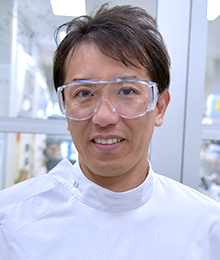
Through these types of initiatives the entrepreneurial approach of AIBN researchers comes to the fore, leveraging their expertise and the institute’s technology to appeal to industry as an ideal partner for solving scientific needs.
This year we also added a new ARC Laureate to our ranks: nanoarchitect Professor Yusuke Yamauchi
Professor Yamauchi’s $3.1 million Fellowship is in recognition of his excellence in the field of next-gen mesoporous materials, which underpins the AIBN’s efforts to unlock a new generation of consumer electronics, photonics, energy conversion and storage devices, sensing technologies, and medical applications.
Professor Yamauchi joins four other AIBN Group Leader researchers who have been awarded this prestigious title, alongside the AIBN’s four ARC Future Fellows, two NHMRC Leadership and nine NHMRC emerging leadership Follows, and ten ARC Discovery Early Career Researcher Award recipients.
Capturing and repurposing ‘forever chemicals’
Our researchers kicked off the year strongly by showing the world a simple, fast and effective technique to remove per- and polyfluoroalkyl substances (PFAS) chemicals from water.
Using a magnet and a reusable absorption aid that they developed at the AIBN, polymer chemist Dr Cheng Zhang and PhD candidate Xiao Tan showed they were able to clear 95 per cent of PFAS from contaminated water in under a minute.
Existing methods currently require machinery like pumps, take a lot of time and need their own power source.
The PFAS removal technique developed by Dr Zhang and Mr Tan involves treating contaminated water with a new solution, called a magnetic fluorinated polymer sorbent. The solution coats the PFAS particles, which are then able to be isolated and removed with a magnet.
Because the process does not need electricity, it can be used in remote and off-grid communities.
The team is now focused on scaling up its testing with a view to having a commercially available product ready in the next three years.
A new era for imaging research
This year we entered a new era by merging AIBN with the country’s premiere imaging science facility – the Centre for Advanced Imaging (CAI).
Directly neighbouring the AIBN at the UQ St Lucia campus, the CAI is at the forefront of imaging research and the only centre of its kind in Australia.
It is now a crucial component in the AIBN’s vision a of providing complete pipeline for personalised medicine: one that starts at drug design, progresses to testing and clinical trials, and ends with our products being delivered to patients in the hospital.
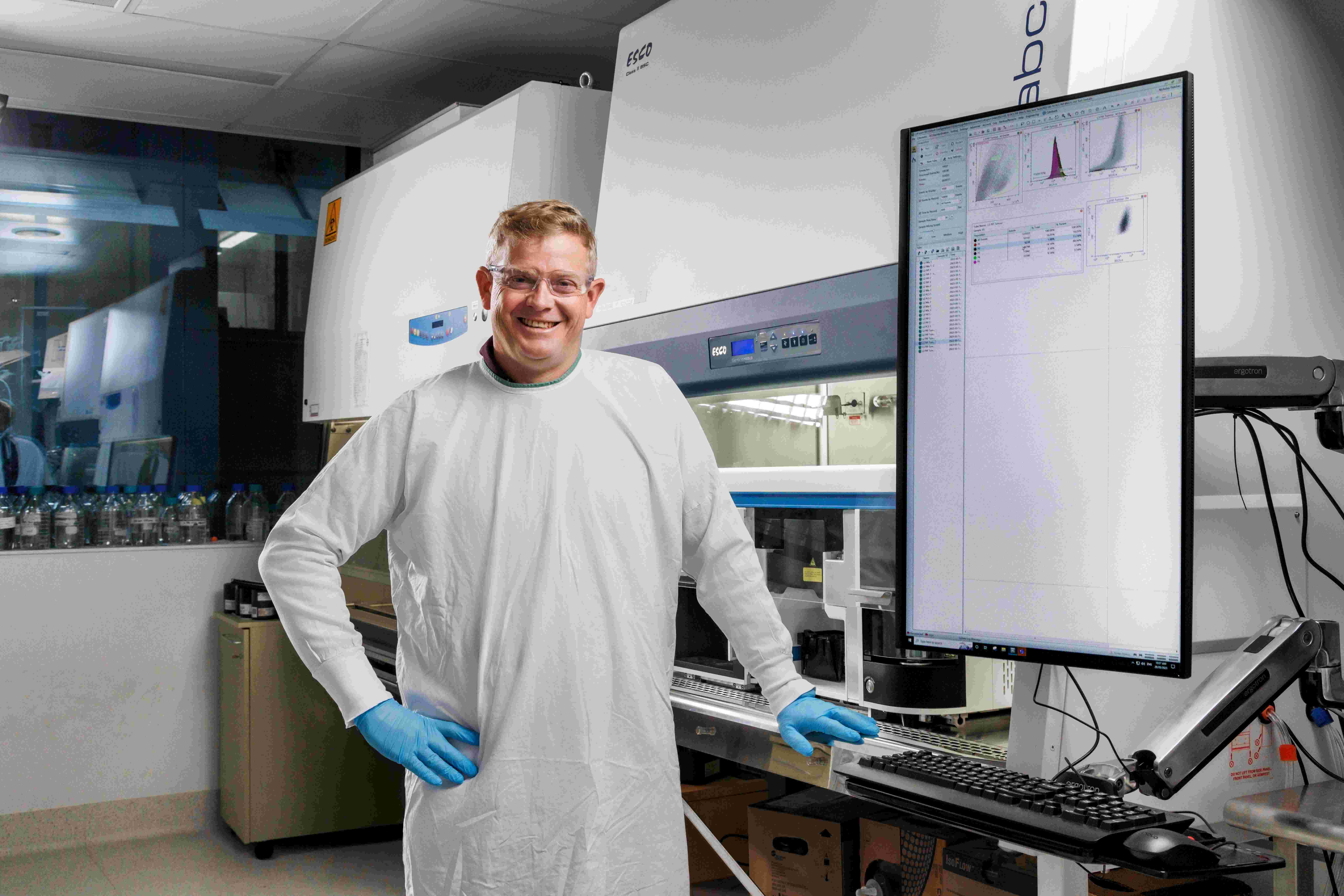
The CAI added to its formidable capabilities throughout the year with various funding schemes including the ACRF Facility for Targeted Radiometals in Cancer (AFTRiC), a $3.1 million facility that will study and develop new ‘alpha therapies’ to kill cancer without damaging healthy tissue.
In 2024 the CAI will also launch the $15 million ARC Hub for Advanced Manufacture of Targeted Radiopharmaceuticals (AMTAR).
Led by AIBN Deputy Director of Research Professor Kristofer Thurecht, the AMTAR hub will address shared industry challenges by developing new technologies and establishing a platform for design, manufacture and quality assurance of targeted radiopharmaceuticals.
Clamp2 provides vaccine hope
A second-generation molecular ‘Clamp2’ vaccine platform developed by our researchers is underpinning a new COVID-19 vaccine candidate that began proof-of-concept human trials in 2023, with preliminary results showing it to be safe and effective.
Led by AIBN Associate Professor Keith Chappell, the UQ Rapid Response Vaccine Pipeline team recruited 70 volunteers to demonstrate the potential benefits of their reengineered vaccine platform head-to-head with the TGA-approved Novavax jab, which had been distributed across Australia since February 2022.
In preliminary clinical results released in November, the Clamp2 platform was judged to have produced a vaccine that is equally safe and virus-neutralising as an approved vaccine considered among the best in its class.

This pivotal proof-of-concept testing clears the way to progress the promising Clamp2 technology in a range of research programs.
Supported by a $8.5 million partnership with The Coalition for Epidemic Preparedness Innovation (CEPI), future vaccine candidates produced using Clamp2 technology will be made available in an outbreak situation to populations at risk including low-income and middle-income countries.
This will ensure that the AIBN will be crucial to ensuring Australia has the capability to develop and deliver clinical-grade vaccines whenever, and wherever, they are needed.
Snake venom to stop uncontrolled bleeding and save lives
One of the AIBN’s true research highlights of recent years is a ground-breaking medical gel that uses snake venom proteins to seal wounds.
In 2023, the researchers behind this life-saving innovation moved a step closer to putting this invention in the hands of pharmacists, paramedics, and soldiers in combat zones.
The AIBN team was awarded $500,000 in CUREator funding to design an easy-to-use device that lets soldiers easily and effectively apply the snake venom hydrogel if they suffer uncontrolled bleeding from a wound in the line of duty.
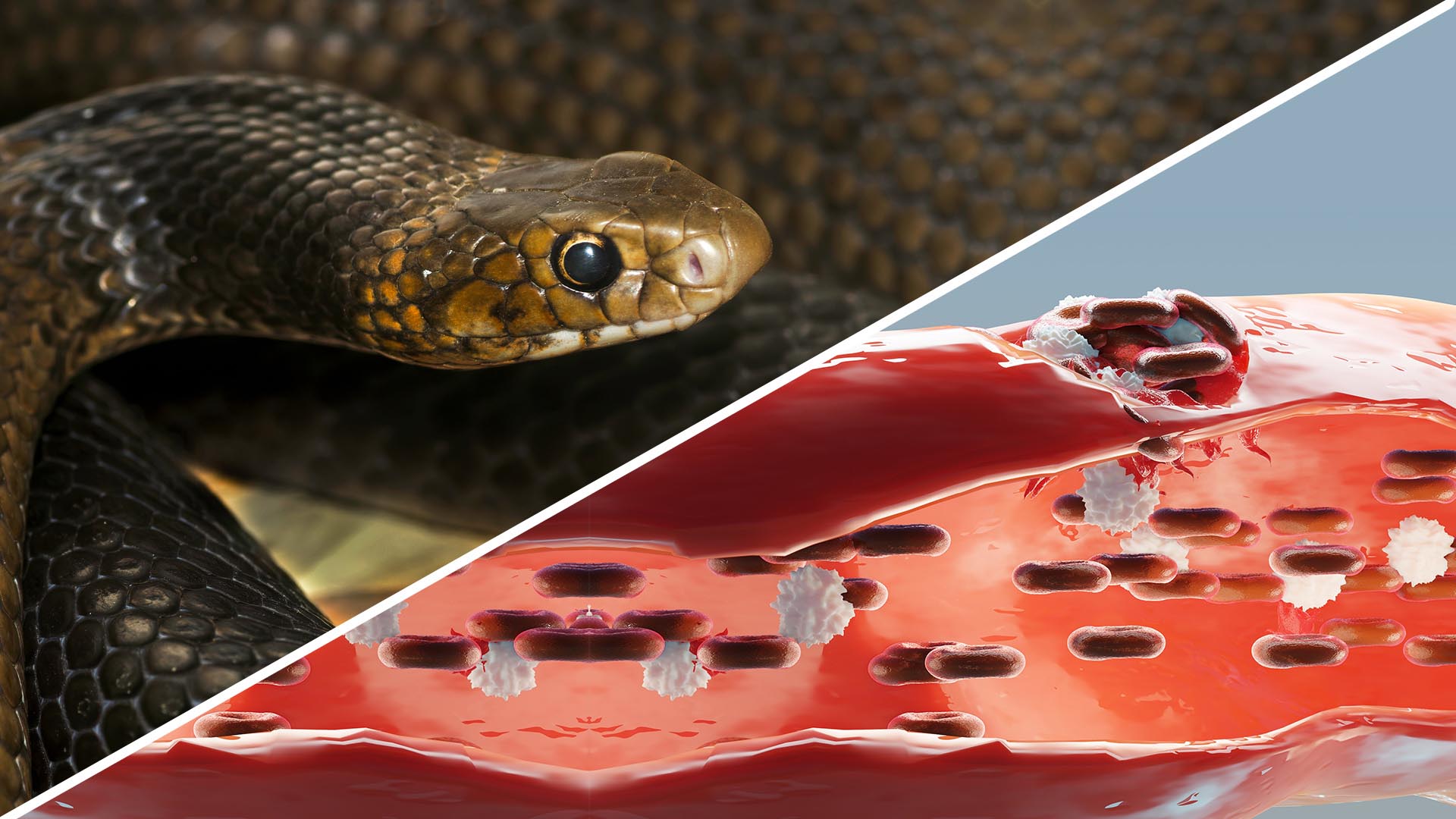
Dr Kijas, who is working alongside AIBN director Alan Rowan on the project, said the funding from CUREator will be used to engage contractor Planet Innovation to bring the concept, function, and manufacturing plan to life - ultimately delivering a simple, ready-to-use product that can stop severe bleeding within a couple of minutes.
Within years, the product could be sold in pharmacies, added to first aid kits, and used by paramedics or military personnel in combat zones, to stop bleeding while a patient is taken to hospital.
Once clinical safety has been demonstrated, the BioBandage team - in collaboration with Professor Mark Midwinter from UQ’s School of Biomedical Sciences - will be well positioned to expand into the lucrative hospital, prehospital, and battlefield haemostatic agents market, currently valued at $US4.3 billion.
Using tiny, artificial organs to shape the future of modern medicine
A major funding parcel helped our organoid research team embark on a project to find a new treatment for a rare hereditary disease and - hopefully in the process - unlock therapies for a range of other neurological disorders.
Professor Ernst Wolvetang and his lab secured almost $1 million from the Medical Research Future Fund (MRFF) to test gene therapies for children with Hereditary Spastic Paraplegia Type 56 (SPG56): a very rare degenerative brain disease that normally begins in childhood and continuously worsens throughout life.
There is currently no cure or treatment for SPG56 but Professor Wolvetang hopes to find one by testing gene therapies on patient-derived organoids, which are tiny, synthetic organs grown from a patient’s own cells.
This SPG56 project is the first time in Australia that brain organoids have been used to test the safety and efficacy of the gene therapy approach for HSP, and Professor Wolvetang says it may help foster change in the regulatory approval process that currently still requires extensive testing in animals.
By demonstrating the power and accuracy of this approach for one genetic disease, this project could also open the door for testing of other gene therapies for a range of genetic neurological conditions.
Biosustainability Hub
AIBN researchers will soon be equipped to help the world’s biggest industries transition to net zero in a cutting-edge, Australian-first facility called the Biosustainability Hub.
The hub will be a one-stop-shop for industry to partner with our research teams to create carbon neutral and economically viable products and materials.
Bringing together established UQ researchers and some of the world’s biggest companies, the hub’s focus will include greener biofuels, clean energy applications, animal-free meat and milk products, more sustainable mining technologies and sustainable materials; all projects which are backed by the most up-to-date synthetic biology processes in the world, including the conversion of waste products and waste gases using reprogrammed bacteria to “eat” greenhouse gas waste. 
By the end of the decade, synthetic biology could be used extensively in manufacturing industries that account for more than a third of global output- a share under $30 trillion in terms of value.
This hub will position Australia to be part of this economic shift.
Engineering a new generation of therapies and treatments
The AIBN’s BASE Facility is the biggest supplier of mRNA vaccines and therapies for research in Australia, and in 2023 the team showed again why it is ideally placed to lead the world in mRNA translation for biotechnology firms.
A $4.4 million grant from the Medical Research Future Fund (MRFF), plus $1 million each from Sanofi and UQ, and $250,000 from the Queensland government was awarded to help BASE establish a world-leading lab to produce mRNA vaccines and therapies for clinical trials.
As demand for mRNA continues to surge, the AIBN’s BASE facility has become Australia’s leading provider of mRNA for research and pilot studies since its launch in 2021.
BASE director, Associate Professor Tim Mercer said the new lab would cement the facility’s footing in the growing mRNA industry, which was worth $45 billion in 2023 and tipped to grow to $130 billion globally by 2030.
It follows an announcement in late 2022 that BASE and mRNA development would be a central plank in a new $280 million Translational Science Hub set up in Brisbane in partnership with the state government, UQ, Griffith University, and Sanofi.
Breakthrough for Indigenous science partnership
Indigenous Australians have used spinifex grass for thousands of years to build shelter and other items including medicines and in wound healing. Now, in partnership with the AIBN, this hardy grass is a proving central ingredient for a new era of biotechnology applications.
In 2023 the AIBN continued its rich partnership with the Indjalandji-Dhidhanu people of remote outback Queensland, together developing new uses for spinifex nanofibres in modern technology.
Following an agreement between Indigenous group Bulugudu Ltd and UniQuest, a spinout company called Trioda Wilingi Pty Ltd was created to develop the gels from cellulose nanofibres extracted from spinifex.
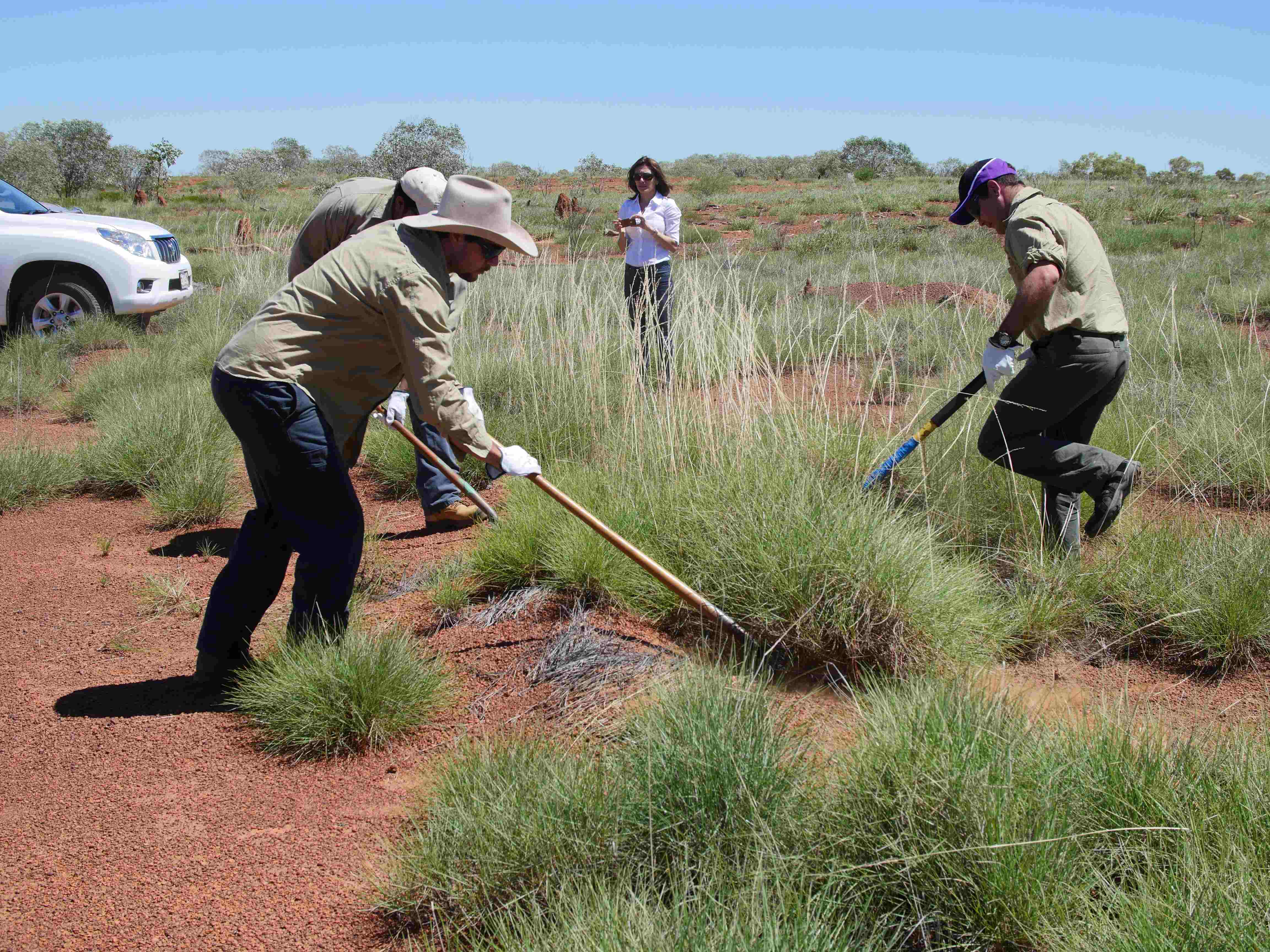
Trioda Wilingi Pty Ltd is the result of a long-term partnership between the AIBN and Bulugudu Ltd (formerly known as Dugalungi Aboriginal Corporation DAC), based in Camooweal about 200km west of Mt Isa; as well as investment from Uniseed.
The Spinifex and Trioda team made further waves in September when they took out the UQ Commercialisation Award at UniQuest's Research and Innovation Awards, while we can look forward to further innovations in crop science and mining rehabilitation projects thanks to a $300,000 Australian Economic Accelerator (AEA) Seed Grant.
This prize will help the Advanced Spinifex Biofuture Materials Centre develop tools to boost the performance of agricultural crops and strengthen native plants for mining rehabilitation and land restoration.



